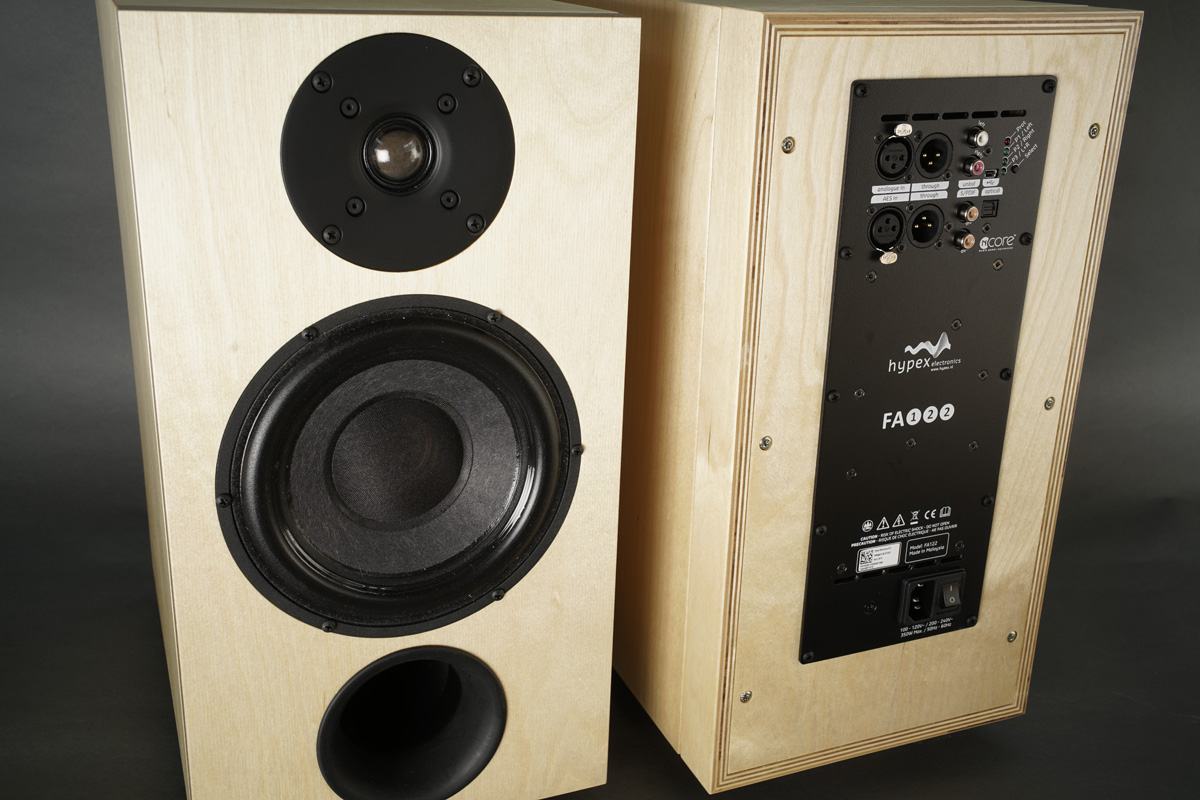Ekta 2D
Copyright 2019 © Troels Gravesen
Go to on this page:
DRIVERS
CABINET
MEASUREMENTS
SPEAKER-KIT
Discontinued from Jantzen Audio, software can be bought directly from me.
I think the Ekta family deserves some new members and here's a smaller
sibling featuring ScanSpeak Classic and Discovery drivers. The tweeter
was also used in
Ekta mkII, a tweeter that really deserves a better classification. The revised Classic 18W/8542-10 has become one of my favourite 6" drivers as it allows almost any crossover topology.
Now, the drivers here are the same as used in my
STUDIO 101 mkII, but this time we're running fully digital and can
place the drivers on a flat front panel as we can delay the tweeter in
the Hypex DSP section for time-alignment.
The special feature about this speaker is that you can choose between
three crossover topologies, 1st order, 2nd order (LR2) and 4th order
(LR4) and provides you with a unique opportunity to pick you favourite
crossover, maybe one for one kind of music, maybe another for some other
musical genre. The Hypex has three pre-sets and all you have to do is
press a button to shift between the three presets. If you're in for
further convenience you can buy the Hypex remote and sit in your sofa
and pick your flavour.

Basics:
2-driver speaker
Dimensions: 22 x 34 x 42 cm, WxDxH.
Points of crossover: variable depending on preset choice, 1st, 2nd or
4th order, but in the range 2-2.5 kHz.
Power requirement: Driven by Hypex FA122, 2 x 125 watts.
Useful links:
http://www.troelsgravesen.dk/tips.htm
http://www.troelsgravesen.dk/crossovers.htm
FAQ:
You cannot change cabinet front panel dimensions and drivers' placement
without needing a new crossover - and I cannot help.
You cannot use any other drivers with the crossover used here and please
read this file before e-maling:
http://www.troelsgravesen.dk/choices.htm
Download specs here: D2608/913000 18W/8542-10

The cabinet is the same as STUDIO-101-mkII, here with depth extended by 40 mm to 320 mm + front panel. Please study workshop images at STUDIO-101-mkII. On the back panel we have to make room for the Hypex module, hence the Hypex box as seen on drawing.
Cabinet almost as simple as can be. Rectangular box with one
vertical brace. I used 20 mm Baltic birch for the basic cabinet and 27
mm for front panel.
Front panels can be made from 19-30 mm BB/MDF/HDF. You can make the cabs
from 19-22 mm BB/HDF/MDF. If you use 22 mm overall increase
depth by 10 mm.
Port is Ø68 x 220 mm. Fairly big, but I think 50 mm is too small. Better
too big than too small to prevent any port noise.
Add 4 mm bitumen pads to sides, top and bottom panels. Se image below.
Add 8 mm felt to sides, top and bottom panels.
Place a piece of 50 x 15 cm acoustilux against top panel and down on
rear panel. Fold a similar piece and place around the port (see image
below).
As always: Any change to front panel dimensions or drivers'
placement and you need a new Hypex software - and I can't help without
having your speakers in my workshop.
Go to website describing installation of software
The actual program for FA122 can be bought from me: troels.gravesen@hotmail.com
Workshop images


Hypex box made from 20 mm BB and 10 mm MDF.


Fitting in Hypex module and starting on the front panels.


Routing for drivers.


Hypex modules in place.


Connect drivers:
Red (+) and black (-) for tweeter.
Blue (+) and grey (-) for midbass.

A few comments on
MEASUREMENTS before you start interpreting the readings below.
First of all, if we think measurements will
tell us how a speaker sounds, we're wrong. The perception of sound is
way too subjective to be reflected in any measurements we can perform. A
loudspeaker system is meant to give us a satisfying idea of an acoustic
event and for some people a pair of 5 USD ear-plugs are enough, others
spend 200 kUSD on a truly full-range pair of speakers - and the latter
may not be happier than the former.
Measurements may give us an idea of tonal balance of a system, i.e. too
much or too little energy in certain areas, although dispersion
characteristics play a vital role here. A two-way 7+1 and a three-way
7+4+1 may display similar horizontal dispersion, yet sound very
different. Measurements may tell us about bass extension if far-field
measurements are merged with near-field measurements. In addition to
this, ports may contribute to bass extension. Most of we diy'ers do not
have access to an anechoic room for full-range measurements from
20-20000 Hz.
What cannot be seen is what kind of bass performance we get in a given
room. Bass performance is highly dependent on in-room placement of your
speaker and the same speaker can be boomy in one place and lean in
another. Actual SPL level at 1 meter distance and 2.8V input is useful
for en estimate of system sensitivity and combined with the impedance
profile may give an idea of how powerful an amplifier is needed to drive
the speaker to adequate levels.
What measurements do not tell is the very sound of the speaker unless
displaying serious linear distortion. The level of transparency, the
ability to resolve micro-details, the "speed" of the bass, etc., cannot
be derived from these data. Distortion measurements rarely tell much
unless seriously bad, and most modern drivers display low distortion
within their specified operating range.
Many people put way too much into these graphs and my comments here are
only meant as warning against over-interpretation. There are more to
good sound than what can be extracted from a few graphs. Every graph
needs interpretation in terms of what it means sonically and how it
impacts our choice of mating drivers, cabinet and crossover design.
What measurements certainly do not tell is the sonic signature of the
speaker, because speaker cones made from polypropylene, aluminum,
Kevlar, paper, glass fiber, carbon fiber, magnesium, ceramics or even
diamonds all have their way of adding spices to the stew. Nor do
measurements tell what impact the quality of the crossover components
add to the sound, from state of the art components to the cheapest of
coils and caps, they all measure the same if values are correct, yet
sound very different.
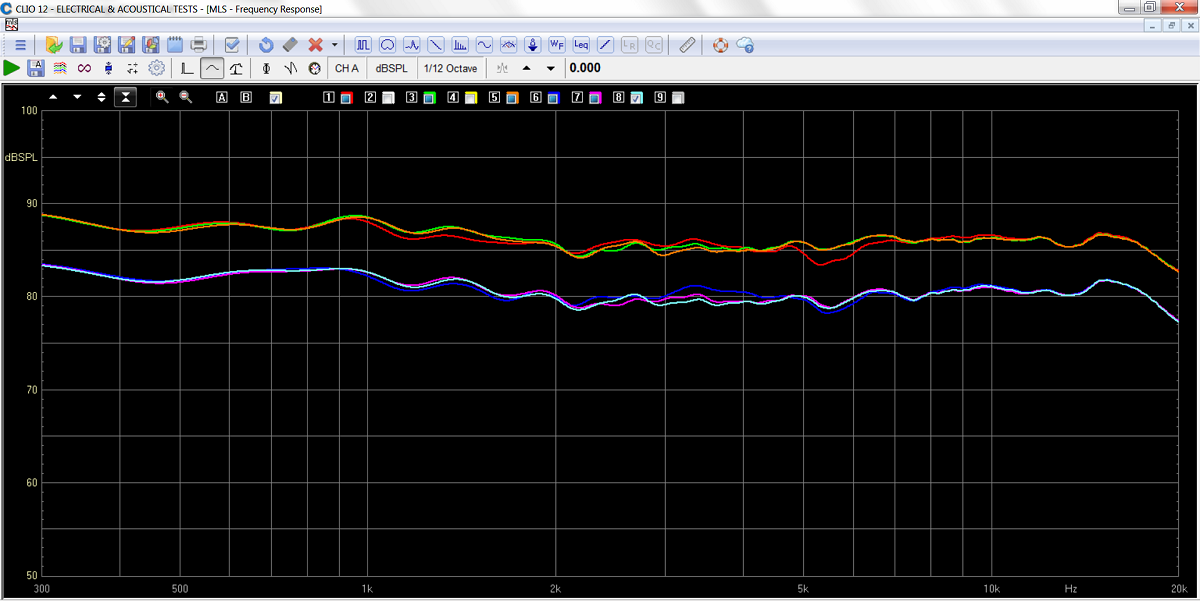
Above frequency response of left and right speaker from 1st, 2nd and 4th
order filters, red, green and orange respectively.
For the other speaker blue, purple and light blue repectively.
SPL recorded with 6 dB difference for the two speakers.
What can be seen is that we have a frequency response of +/- 0.5 dB
regardless of crossover topology, which give a good chance of comparing
sonic qualities of the various filters.
Measurements were done at ½ meter distance with microphone between
tweeter and midbass.
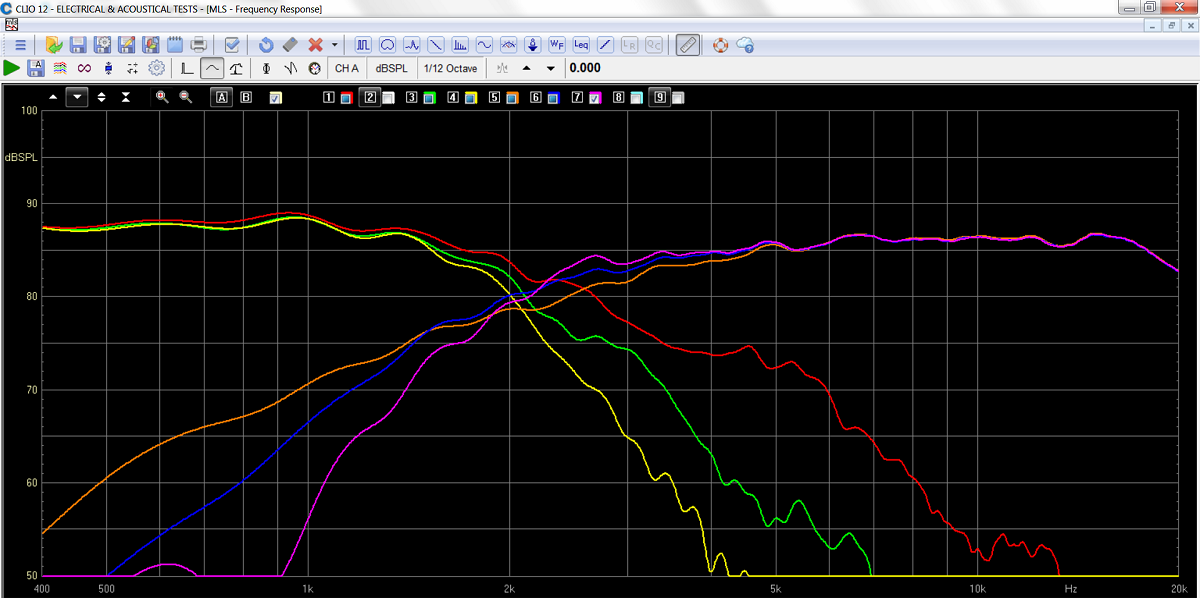
Above the slopes of 1st, 2nd and 4th order filters.
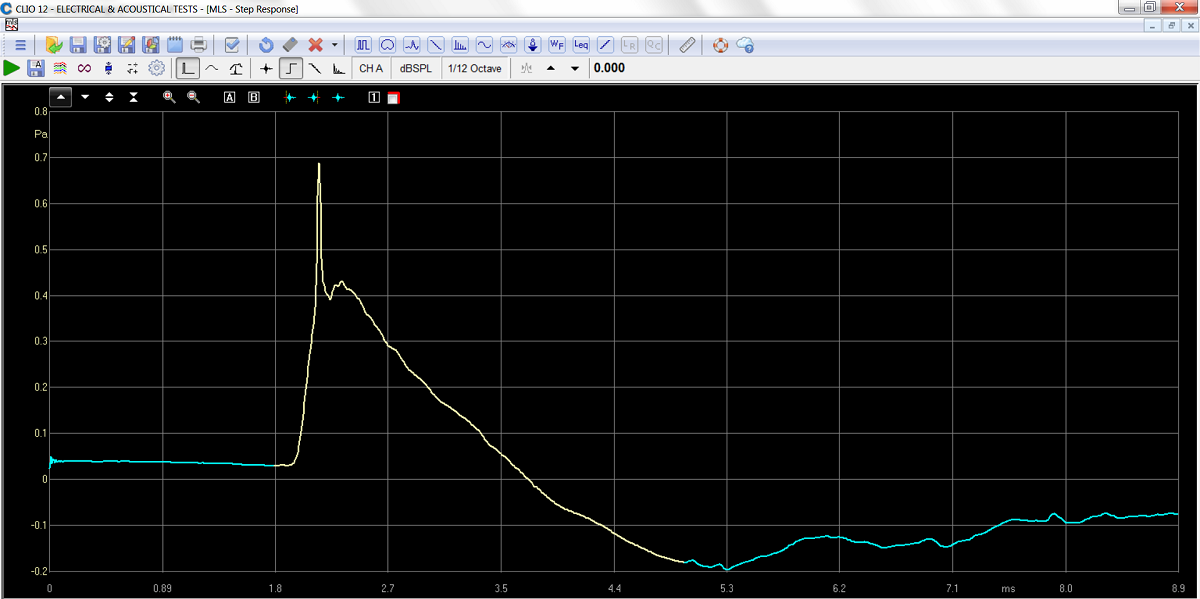
Step response of 1st order filter. Note drivers have same polarity.
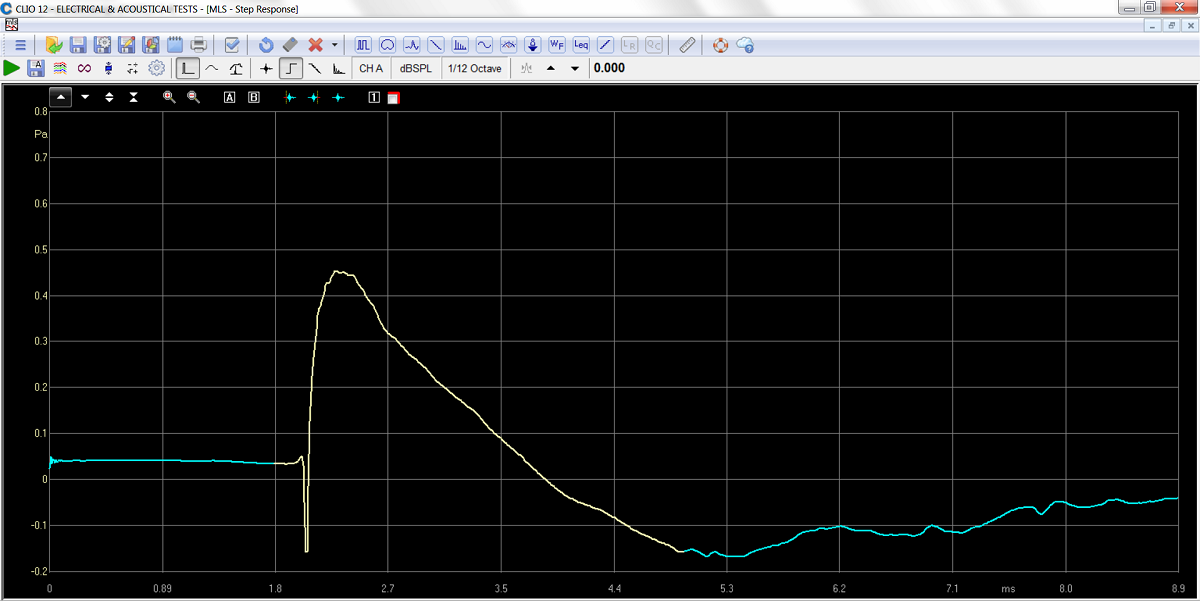
Step response of 2d order filter with tweeter connected with inverted
polarity.
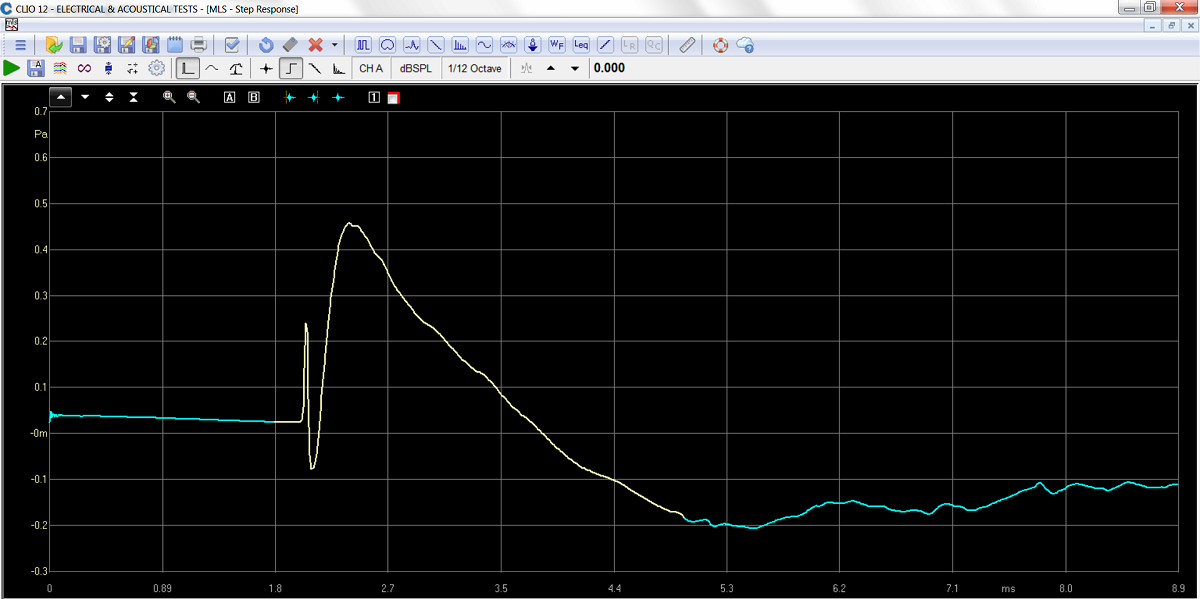
Step response of 4th order filter with drivers having same polarity.

No longer available from Jantzen
Audio.
Programming the Hypex module, go here.
All technical questions to troels.gravesen@hotmail.com
